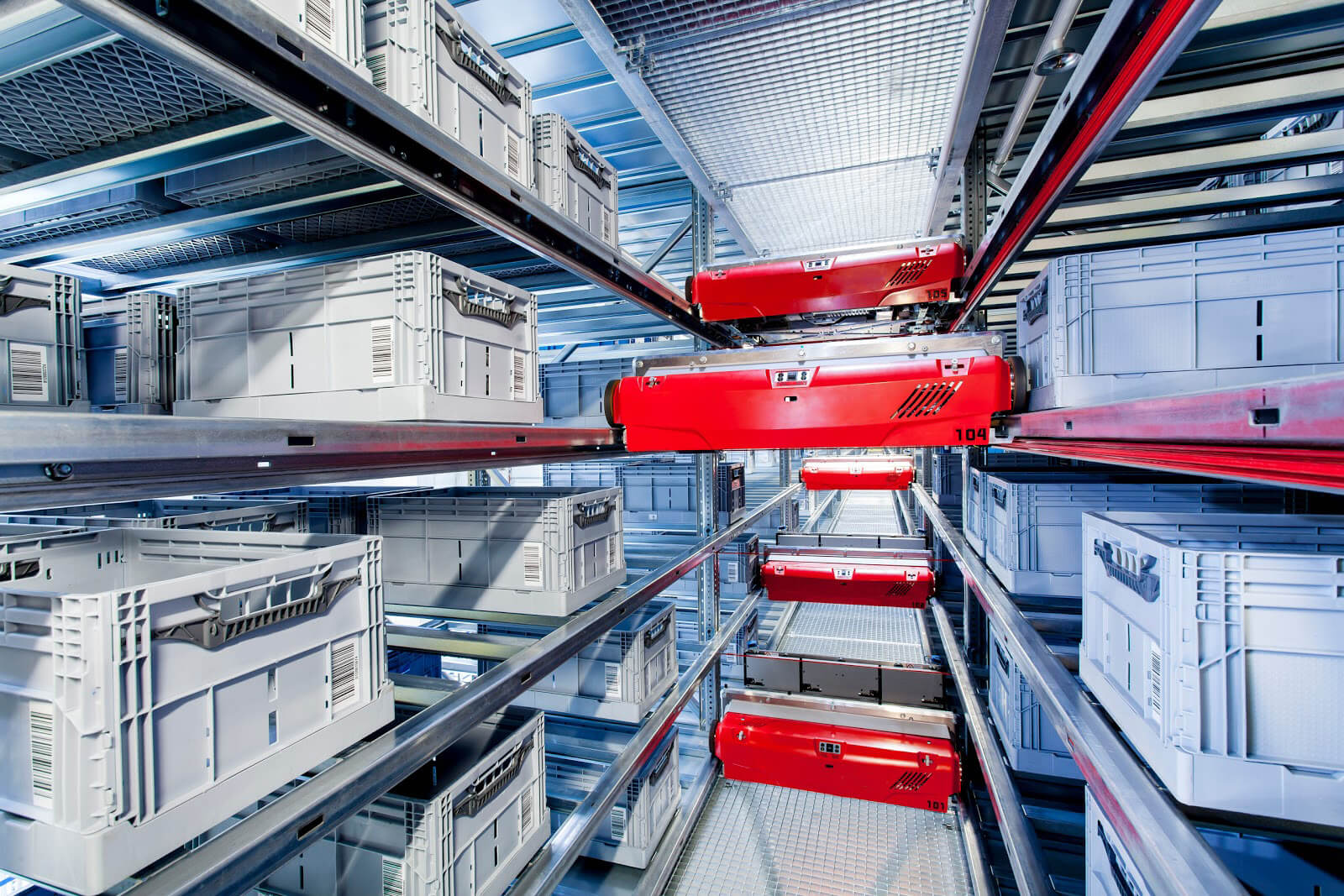The COVID-19 pandemic influenced supply chain operations, affecting everything from manufacturing and shipping to distribution and warehousing. When the world came to a halt, warehouses faced an almost intractable problem: how to continue operating while keeping people at home safe? The answer became clear quickly: automation.
Warehouse automation companies are not new, and numerous automated systems are widely used worldwide. However, a global epidemic has shown new ways in which automation can assist warehouses in making significant gains and empowering their workers.
Trends That Changed the Warehousing Industry
As we adjust to the “new normal,” here are some developing trends and advances in warehouse automation to consider for your business:
- Shuttle Automated Storage & Retrieval Systems
Shuttle Automated Storage and Retrieval Systems are automated storage and retrieval systems. These automated storage and retrieval systems, also known as shuttle AS/RS, use multiple shuttles traveling in three dimensions to autonomously collect and place items from dedicated high-density shelving racks in a warehouse with precision, accuracy, and speed. This automated storage solution saves warehouse workers time and effort when ordering fulfillment. It is an essential support system for critical warehouse operations such as picking, kitting, and assembly.
- Conveyor Systems
Regarding layout, the modern warehouse must be agile, leading to automated and flexible conveyor systems. Traditional fixed conveyor systems meant that warehouse layouts and workflows could never change, or if they did, it would necessitate lengthy downtimes and work stoppages. Warehouses now have more options for automating material movement thanks to advancements in flexible powered conveyors. Warehouses can also leverage current technology, such as warehouse robots with conveyor top modules, to operate with existing conveyor systems, allowing operations to develop and scale as manufacturing automation companies produce demands.
- IoT in Industry
The Industrial Internet of Things (IIoT), also known as Industry 4.0, is a trend in which industrial settings, such as warehouses, integrate cutting-edge technology to improve efficiency. Many warehouses are employing advanced sensor technologies to connect and monitor the many parts of their operations. This connectivity provides warehouses with new data to help influence decision-making that optimizes and improves every aspect of their process.
- Machine learning in warehouse labor planning system
Machine learning (ML) is a subset of artificial intelligence (AI) technology in which machines are programmed to improve their decision-making and performance over time. An example of its application would be a mobile order-picking robot that learns how to handle various things to avoid breakage.
Compared to previous approaches based on ‘designed labor standards,’ Warehouses can utilize ML to make warehouse labor planning systems significantly more accurate and efficient based on engineered labor standards (ELS). A labor planning system seeks to answer problems such as how many workers are required to fill orders each day and how long it will take to finish a specific set of jobs.
To establish average times taken, for example, ELS-based systems necessitate extensive measuring and modeling. They only consider a small number of variables in doing so. There is a lot less upfront time and effort with ML-based systems. They instead base their estimations on a continual study of finely detailed operational data derived from several sources.
They can examine direct and indirect effects on operations while working with various data and factors. As these variables change, an ML-based system updates its calculations. Furthermore, the system instantly adapts to the new scenario if your process is altered. Meanwhile, The warehouse team must thoroughly update the ELS-based system with unique measurements and models.
- Automated picking
Picking is one of the most time-intensive and physically demanding processes in warehouse operations, accounting for 50% of the fulfillment process and spending significant time and money. The warehouse team can almost totally automate the picking process with automated warehouse systems such as cobots, automated forklifts and carts, autonomous mobile robots, and mobile conveyors. With these technologies, employees can spend less time picking and more time on duties that are more complicated and beneficial to the entire warehouse.
- Automated carts
Warehouse automation companies can program coaches to navigate between predefined destinations, collecting products and transporting them to storage, shipment, assembly, and other locations. Warehouse workers know the distances they can cover while moving carts around the complex. However, warehouse automation has enabled workers to delegate that activity to an automated or robotic cart, allowing them to focus on duties they love and offer value to the warehouse.
These carts, which frequently require assistance such as lines on the floor, are known as automated guided carts, or AGCs. Other warehouse possibilities include autonomous mobile robots (AMRs) that move carts to destinations without external guidance. The user merely enters a location, and the AMR will navigate itself. Multipurpose AMRs may load and unload products independently or connect to various warehouse carts.
- Scalability
If the global pandemic has taught us anything, we must be prepared for anything, especially regarding warehousing and fulfillment activities. Automated warehouse solutions can improve many functions, but it can be difficult if these tools and technologies aren’t built to adapt and expand as needed.
Regarding warehouse automation, robotics, and storage, scalability means having solutions that can be quickly modified, scaled up or down, and designed to match your operation rather than the other way around. Flexible solutions, such as autonomous mobile robots, allow manufacturing automation companies to alter warehouse operations as demand changes, relieving workers of the burden.
Wrapping Up
The warehouse business has recently embraced cutting-edge technology and equipment, including Artificial Intelligence, Machine Learning, the Internet of Things, and Blockchain.
These automate repetitive processes, decrease labor-intensive duties, and increase worker safety. The transition from manual to digital automation and the reduction of human engagement in dangerous operations make warehouses safer while lowering operational costs.
If you are looking to have efficient warehouse automation, then it is the perfect time for you to hop on to Vega India.
Head to their website, get in touch with their expert teams, and discover some exciting details about the brand today!











Great website. Lots of useful information here. I look forward to the continuation.
As I website owner I believe the content material here is really good appreciate it for your efforts.
Very well presented. Every quote was awesome and thanks for sharing the content. Keep sharing and keep motivating others.
This is my first time pay a quick visit at here and i am really happy to read everthing at one place
Comments are closed.